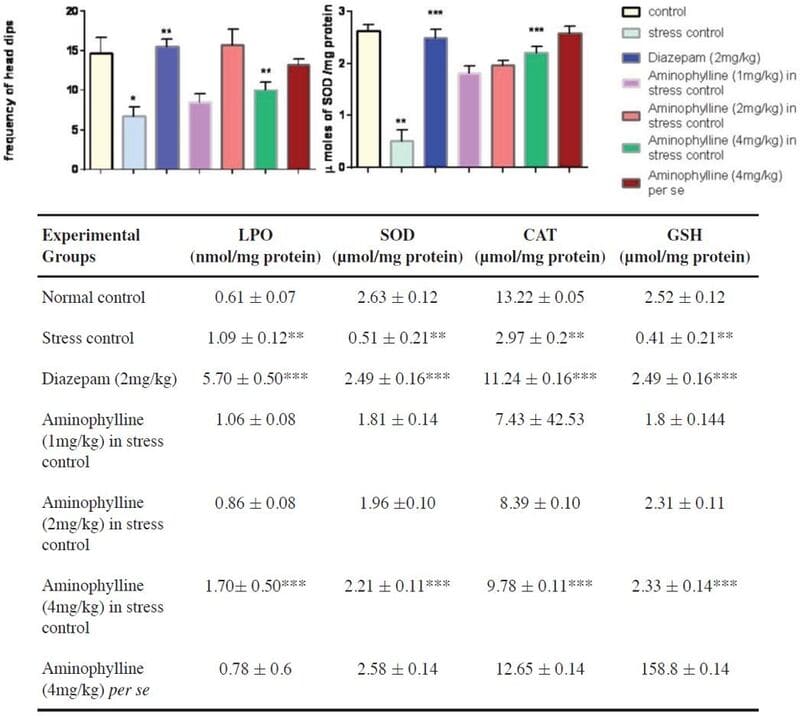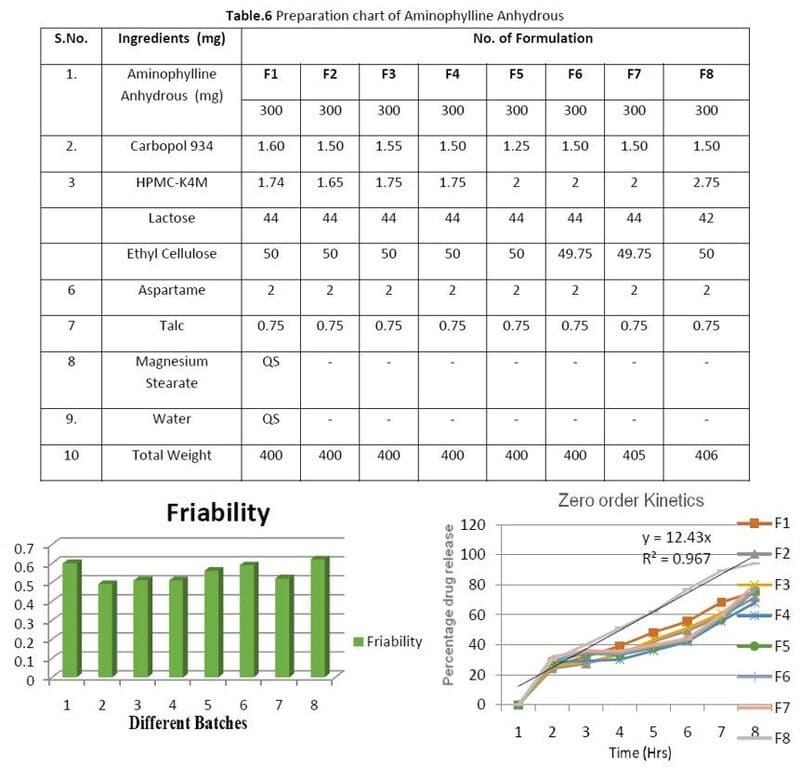 Kaur, Rajneet, et al. Journal of Pharmaceutical Technology, Research and Management, 2017, 5(2), 117-133.
Kaur, Rajneet, et al. Journal of Pharmaceutical Technology, Research and Management, 2017, 5(2), 117-133.
This study focused on the potential of aminophylline to suppress behavioral changes induced by stress in rats. Changes in reduced glutathione, lipid peroxidase, catalase, and superoxide dismutase in restraint-stressed animals were also investigated to determine the biochemical basis of the anti-stress mechanism of aminophylline.
· Evaluation Methods
The animals were subjected to restraint stress before being treated with different doses of aminophylline (1mg/kg, 2mg/kg, and 4mg/kg). Behavioral changes were analyzed to assess the intensity and degree of stress by using various paradigms to assess changes in exploratory behavior, spontaneous activity, and social behavior. As a result of stress, changes in behavioral patterns were assessed by changes in locomotor activity, the number of head drops, and an increase in avoidance behavior.
· Results
Aminophylline (4mg/kg) modulated behavioral changes induced by stress, and significant biochemical changes induced by oxidative stress were observed (p < 0.001). Under stress conditions, TNF-α expression increases and, together with other neuroinflammatory mediators, leads to behavioral changes. Aminophylline modulates TNF-α activity in the brain, thereby creating the potential to counteract and inhibit stress-induced behavioral changes.


 Gangwar, Manish, et al. NeuroQuantology, 2022, 20(11), 1457.
Gangwar, Manish, et al. NeuroQuantology, 2022, 20(11), 1457.
 Kaur, Rajneet, et al. Journal of Pharmaceutical Technology, Research and Management, 2017, 5(2), 117-133.
Kaur, Rajneet, et al. Journal of Pharmaceutical Technology, Research and Management, 2017, 5(2), 117-133.